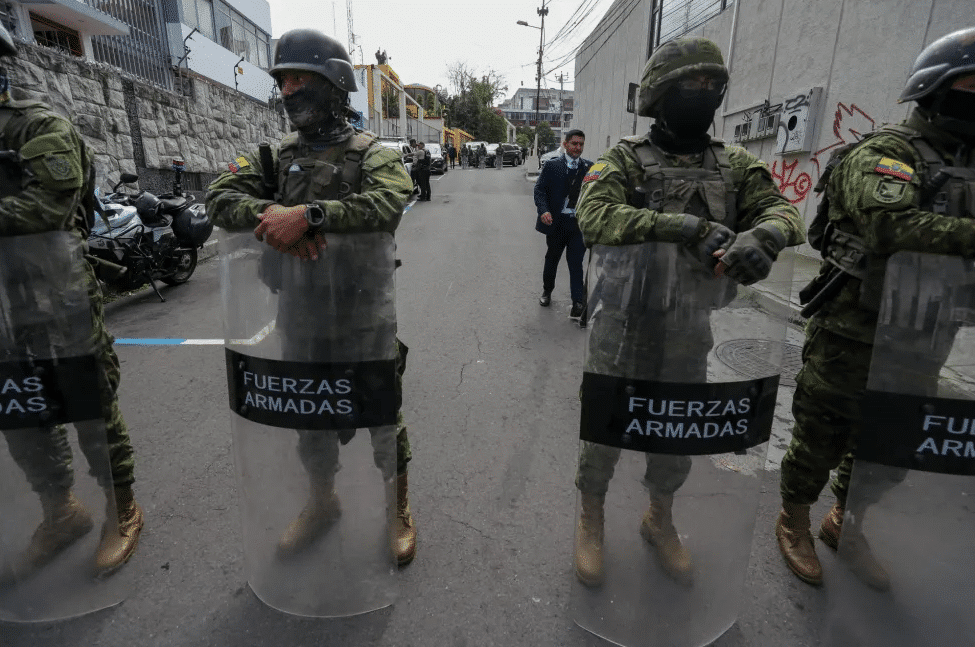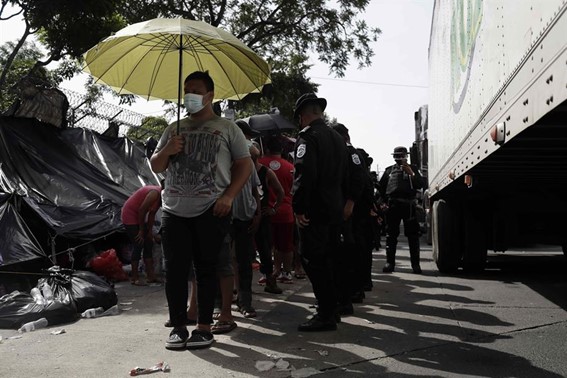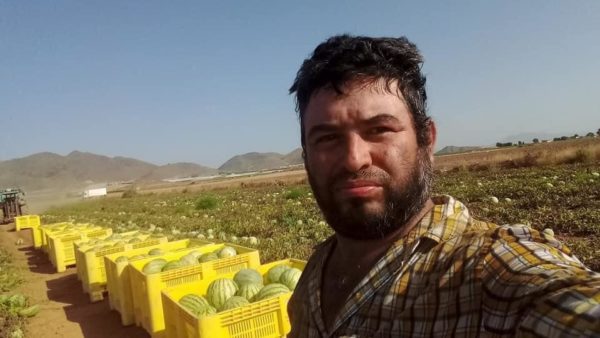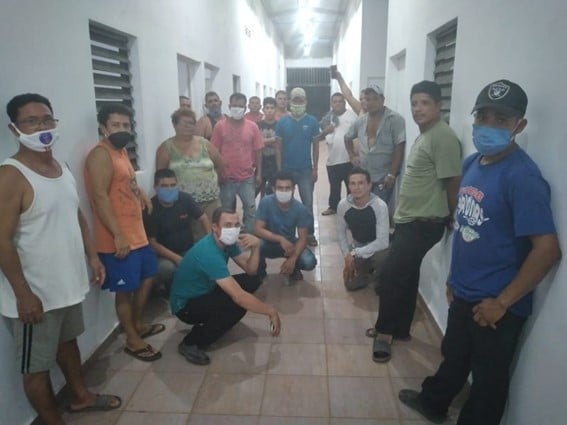31 de diciembre 2020

The Return of the Military

PUBLICIDAD 1M
PUBLICIDAD 4D
PUBLICIDAD 5D
The pandemic has left many migrants unemployed and vulnerable to exploitation. Hundreds were left stranded in other countries or at the borders.

The pandemic has left many Nicaraguan migrants unemployed and vulnerable to exploitation. Hundreds were left stranded in other countries or at the borders.
In 2020, the pandemic meant new hardships for thousands of Nicaraguan migrants. These migrants left their country because of the socio-political and economic crisis caused by the state repression. Covid-19 worsened the situation of these Nicaraguans in the United States, Mexico, Spain, Costa Rica and the Caribbean Islands. In some cases, the repercussions were fatal.
One of the cases reflected in the media was that of Nicaraguan Eleazar Blandon Herrera. He died early in August after being abandoned in the doorway of a hospital in Murcia, in southern Spain. Blandon had collapsed from heat stroke in the watermelon fields where he was working.
Eleazar Blandon left Nicaragua in 2019. He planned to work and return with enough money to establish a small business in his native Jinotega. However, life in Europe wasn’t what he had hoped. He lived hand-to-mouth. When the pandemic put a hold on his asylum application, he had to accept a job in the watermelon fields. There, he picked the heavy fruit for eleven-hour shifts, under high temperatures and without water to drink.

Eleazar Blandon in a photo he sent his sister Ana, a few days before his death. Courtesy photo
Ana Blandon, Eleazar’s sister, recalled that he phoned her weeks before to complain of the abusive working conditions. “Here they humiliate you. They call me a donkey. While beng over they throw dust in your face.”
“El Pais”¸a prestigious Spanish newspaper, wrote that Blandon’s death triggered “an immediate reaction of shame.” It occurred in a European Union country where abusive working conditions like these still persist.
Costa Rica is the main destination of the Nicaraguan refugees and economic migrants. There, the pandemic brought job losses, hunger and homelessness. The UN High Commissioner for Refugees conducted a humanitarian study of the situation. They found that around 14% of this population was eating once a day or less, while 63% only ate two meals a day.
Prior to the pandemic, 93% of the families had paying work. Now, only 59% have held onto their jobs. Many have survived thanks to the solidarity of organizations and other migrants. Still others have decided to return to Nicaragua, despite the lack of security and the dire economic situation there.
According to data from the Costa Rican Immigration office, approximately three thousand Nicaraguans have withdrawn their asylum requests. This is, however, a small fraction of the more than 80,000 asylum requests filed by Nicaraguans. The majority of the exiled Nicaraguans still have no plans to return, as they feel under threat by the current government.
Earlier Nicaraguan migrants, along with those who arrived in the past two years, face a double challenge. They must deal with both the Coronavirus and Costa Rican xenophobia. In the first weeks of the virus, Costa Rica had the infections under control. Nonetheless, once cases started rising, Costa Ricans began to point fingers at the foreigners, the majority of them Nicaraguans. At one point, these migrants represented almost 30% of the total contagions. Today, the figure has dropped to 16%.
First, there was concern for the illegal crossings of potentially infectious Nicaraguan migrants, along the countries’ porous land borders. Later, as border security tightened, alarms were raised about the increase in cases in urban areas with large migrant populations.
Along the border, townspeople on both sides found their lives interrupted, when routine border crossings were abruptly cut off. Meanwhile, in San Jose, some Nicaraguans got sick because they had to work and couldn’t stay home.
“I’m a single mother, and my son is waiting for me in Nueva Segovia. The only thing we do is to work to sustain our kids. Please, open the border!” This was the call from one Nicaraguan migrant among more than 500 citizens who found themselves trapped at the border. The large group of Nicaraguans was stranded for 13 days on the Costa Rican side of the “Peñas Blancas” border station.
In mid-July, hundreds of Nicaraguans living in Costa Rica attempted to return home. However, they were unable to enter their home country. Without warning, the Nicaraguan authorities demanded that they show proof of a negative Covid-19 test result.
The majority of these Nicaraguans were economic migrants who had been left unemployed by the pandemic. They didn’t have money to pay for the exam, or to return to a city where it was available.
The group remained stranded at the border zone, sleeping outside under rain and sun. They had little to eat for the first few days, and there was only one bathroom they could access.
Eventually, the hundreds of migrants received food and water from Costa Rican organizations and volunteers. In addition, humanitarian organizations collected money to be able to offer Covid-19 tests from a private Costa Rican laboratory.

Some 35 Nicaraguans remained stranded at the port of “La Union” in El Salvador. Courtesy photo.
This was just one of the groups of Nicaraguans stranded amid the 2020 pandemic. Before the “Peñas Blancas” incident, there were migrants trying to return from the Caribbean countries, El Salvador, Guatemala and Panama. These groups, as well, were barred from entering the country until they showed a negative Covid test. By April 23rd, the number of stranded Nicaraguan migrants from these countries had passed 200.
The Nicaraguan government never officially closed their borders for the public health emergency. Their neighboring countries did so in March, as soon as the first cases of the virus reached the region. Then, suddenly, the Nicaraguan authorities blocked the entrance of charter flights and buses carrying repatriated Nicaraguans. “It was like they closed the door of your own house, right in your face,” one of them said.
These Nicaraguans were unable to return for a number of months. At the beginning of December, there were still some Nicaraguans returning from Panama. Here, as in Costa Rica, hundreds had been waiting without jobs, money or food. They were forced to remain until the Nicaraguan government agreed on an “orderly and secure” plan of reentry for its own stranded citizens.
Despite the additional difficulties imposed on these migrants amid the pandemic, many Nicaraguans have returned. The Nicaraguan government asserts that nearly 80,000 Nicaraguans returned to the country between March and the December. It’s a statistic that can’t be compared to past years. Unfortunately, there’s no way to access the Interior Ministry’s annual reports of migratory movements. It’s also impossible to be sure how many Nicaraguans may have left the country in the same time period.
PUBLICIDAD 3M
Periodista nicaragüense desde 2007, con experiencia en prensa escrita, televisión y medios digitales. Tiene una especialización en producción audiovisual y una maestría en Medios de Comunicación, Estudios de Paz y Conflicto de la Universidad para la Paz de las Naciones Unidas. Fundadora y editora de Nicas Migrantes, proyecto por el cual ganó el Impact Award 2022 del Departamento de Estado de EE. UU. Ha realizado coberturas in situ en Los Ángeles (Estados Unidos), México, El Salvador, Guatemala, Nicaragua y Costa Rica. También ha colaborado con France 24, The Guardian, Al Jazeera, BBC World Service. Ha sido finalista y ganadora de varios premios nacionales e internacionales, entre ellos el Premio Latinoamericano de Periodismo de Investigación Javier Valdez, del Instituto Prensa y Sociedad (IPYS), 2022.
PUBLICIDAD 3D